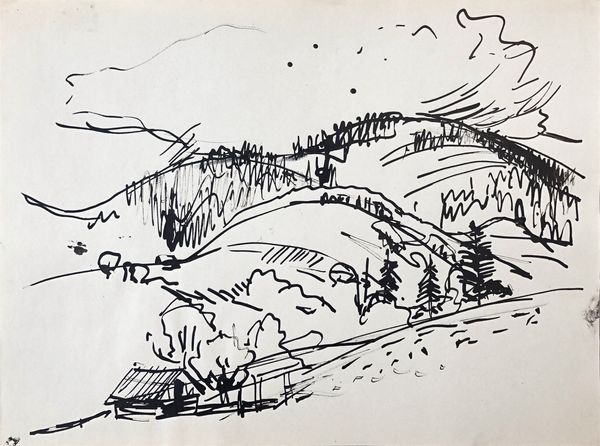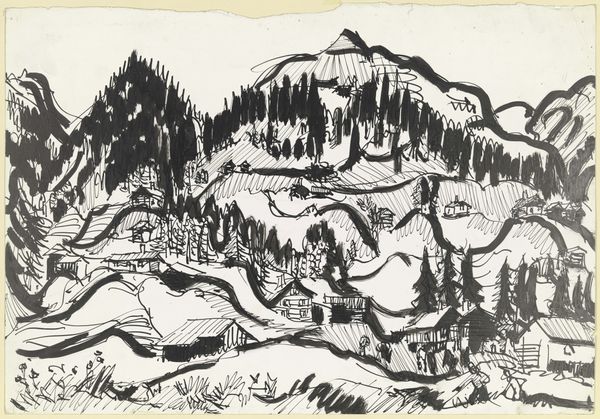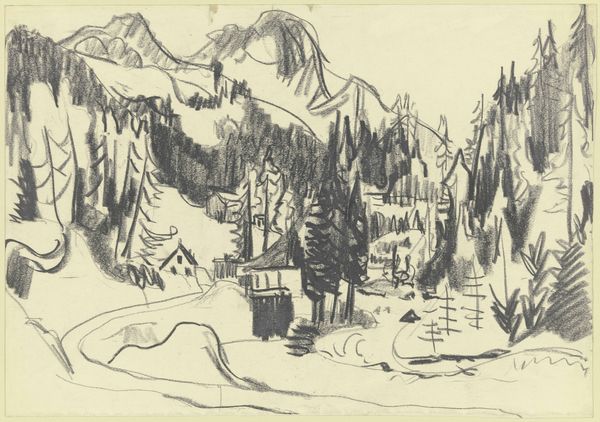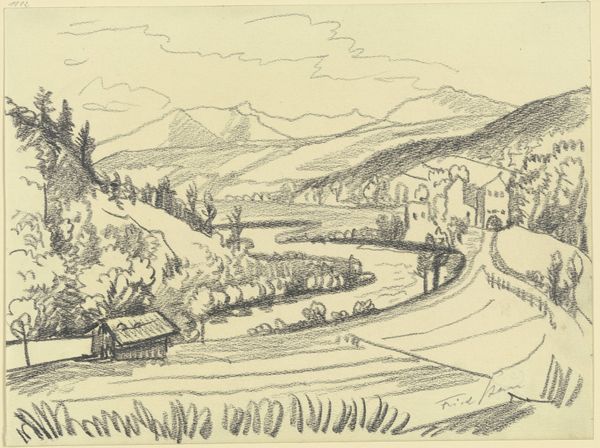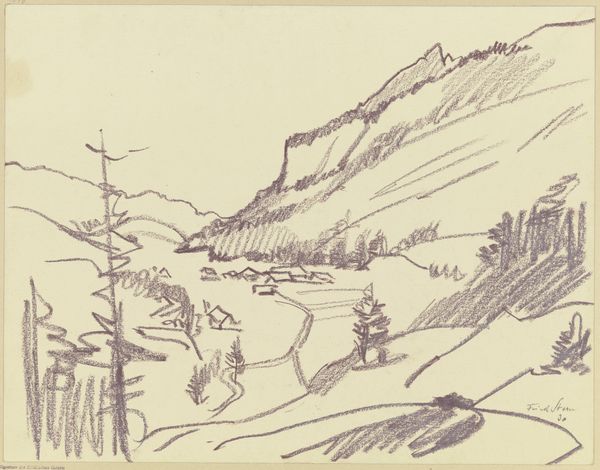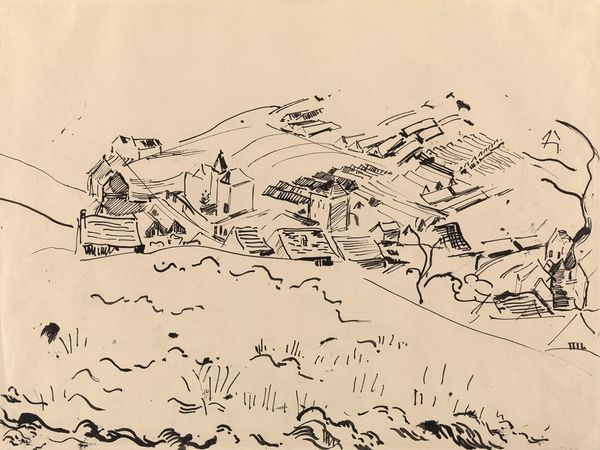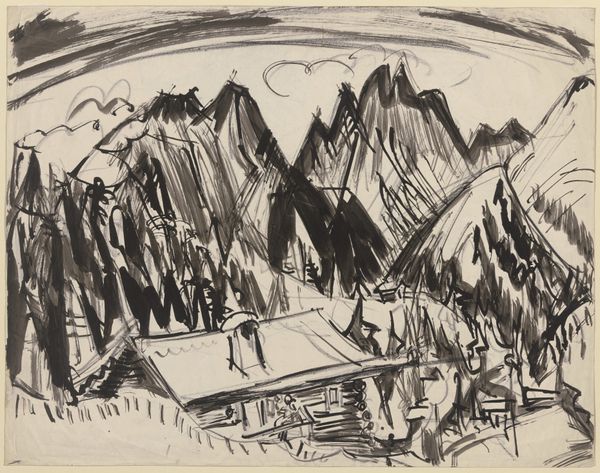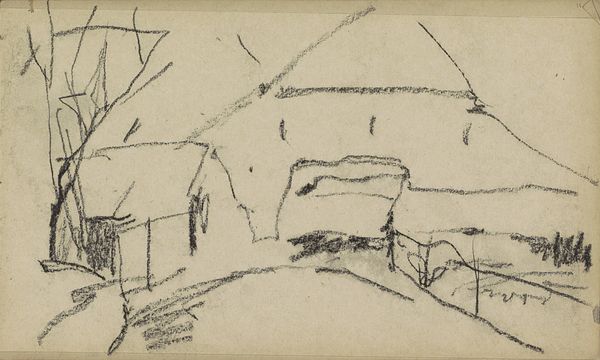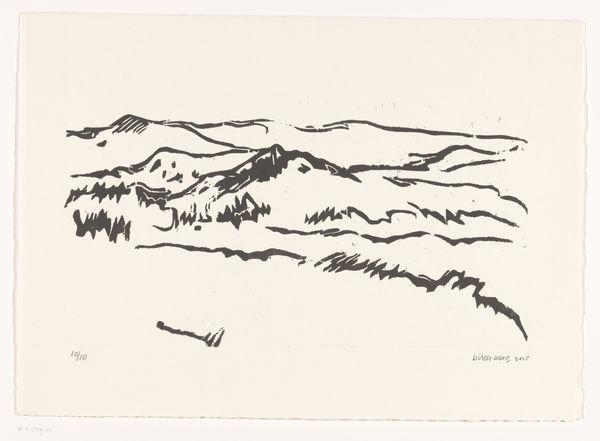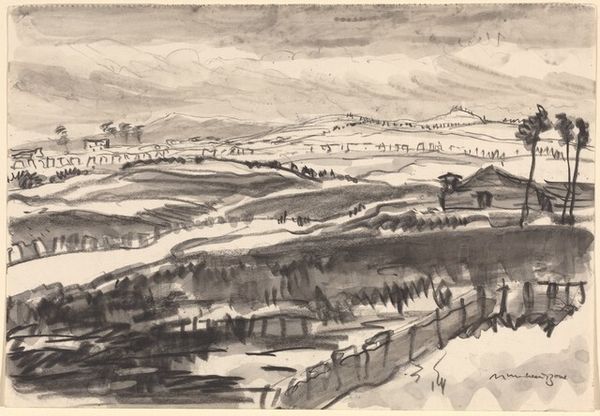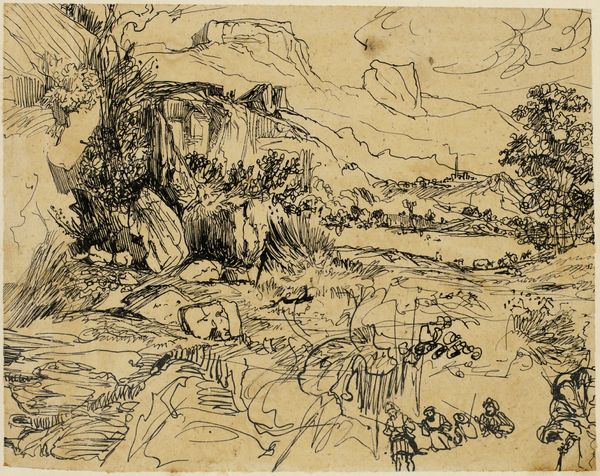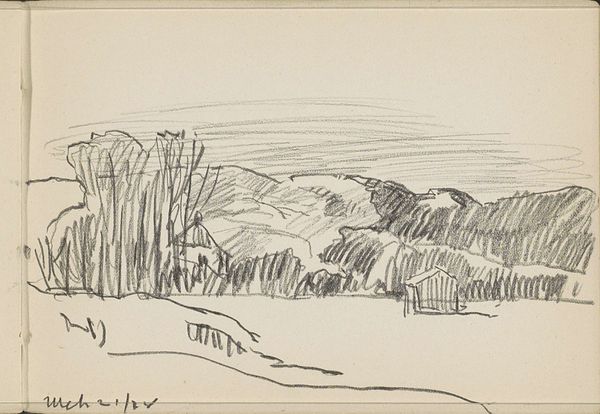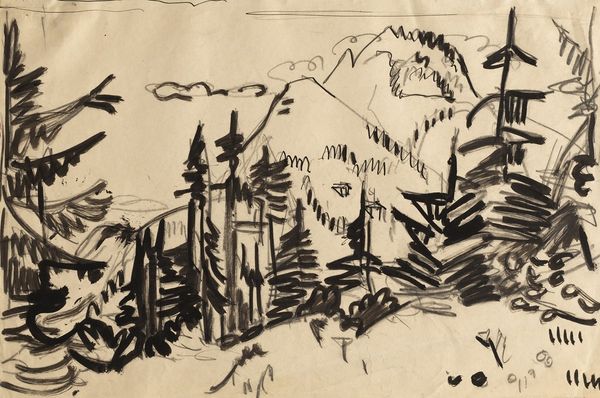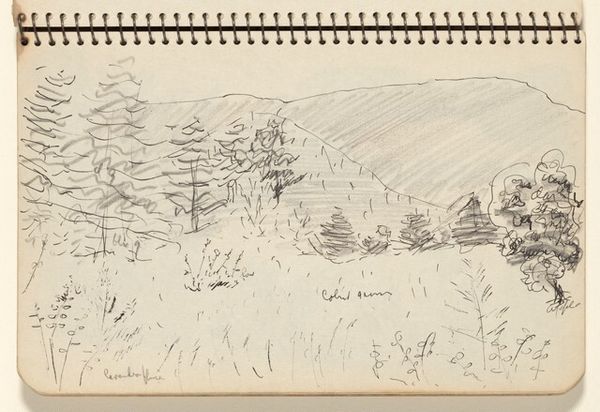
drawing, paper, ink, charcoal
#
17_20th-century
#
drawing
#
pen illustration
#
landscape
#
german-expressionism
#
paper
#
ink
#
geometric
#
expressionism
#
abstraction
#
charcoal
Copyright: Public Domain
Editor: This is "Frauenkirch" by Ernst Ludwig Kirchner, made around 1924, using ink and charcoal on paper. It reminds me of a quick sketch, capturing the essence of a village nestled in a mountainous landscape. What stands out to you? Curator: Notice how the dense, angular lines build the mountains, creating a feeling of confinement, almost a psychological barrier. The village, pressed between these looming forms, carries a symbolic weight, doesn't it? Editor: I see what you mean. The mountains seem almost protective, but also a little threatening, dominating the village. What do you think Kirchner was trying to express with this contrast? Curator: Kirchner was part of the German Expressionist movement, which often used distorted forms and jarring compositions to convey intense emotions and societal anxieties. The sharp lines and dramatic contrast between light and shadow evoke a sense of unease and tension, mirroring the turbulent times following World War I. What feelings do these visual symbols communicate to you? Editor: Thinking about it in that context, it does feel like a reflection of a world struggling to rebuild after immense trauma. The village, representing community, is overshadowed by the mountains, which maybe symbolize the overwhelming challenges of the time? Curator: Precisely. The rapid, almost frantic lines could symbolize the urgency and anxiety of the era. Artists use symbolism like this to convey emotional and psychological realities far beyond a literal representation of place. Have your perceptions shifted after understanding more of the history? Editor: Absolutely. Seeing it as more than just a landscape drawing but a window into a specific moment in history, filled with the weight of cultural memory, definitely enriches my understanding and appreciation of it. Curator: Indeed, art acts as a potent repository of cultural memory. Studying these symbolic representations illuminates shared experiences across generations, transforming how we engage with both art and history.
Comments
stadelmuseum about 2 years ago
⋮
Before Kirchner settled in Switzerland permanently in July of 1918, he had hardly ever depicted the outdoors as pure landscape. Until then, nature had served him primarily as a frame of action for depictions of nudes. When he moved to Frauenkirch near Davos, however, the scenery of the Swiss Alps directly surrounding him became a dominant motif in his art. Here the artist drew the contours of the mountain panorama and the slopes forming a valley with black crayon of an oily gleam. To depict the fir trees growing along the slopes and peaks, he used lines curving to form arcs.
Join the conversation
Join millions of artists and users on Artera today and experience the ultimate creative platform.
